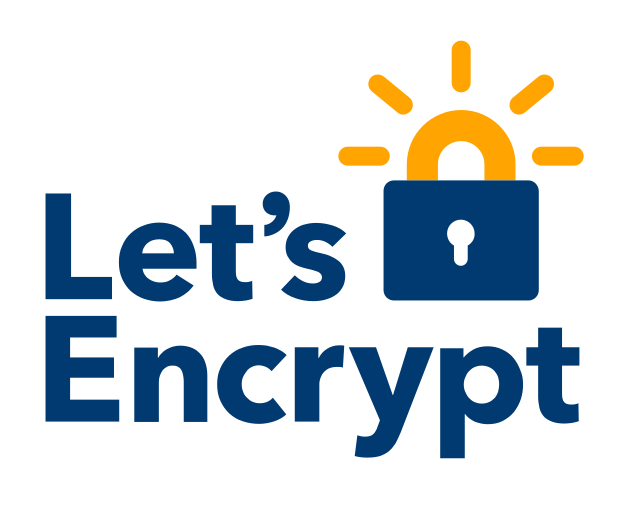Lets's Encryptでブログの常時SSL化にチャレンジ
管理画面とか、APIのエンドポイントを作るためになんとなく、httpsにしておきたいと常々思ってたので、無料で証明書を発行できるLets’s Encryptを利用して、これを機にブログも常時SSL化を目指した。
基本的には、提供されるLet’s Encryptのコマンドを叩いて、画面の指示に従っていけば、証明書を発行することが出来た。こんなことなら、もっと早く着手すればよかったと思うぐらいである。その中でもハマった点は、Pythonのバージョンと、443のポートの開け忘れで、手順も含めて、忘れないようにメモしておく。
Lets’s Encryptの使い方は、以下のサイトを参考にした。
- How It Works - Let’s Encrypt - Free SSL/TLS Certificates
- Let’s Encrypt の使い方 - Let’s Encrypt 総合ポータル
- 無料SSL証明書の Let’s Encrypt が公開されたので実際に試してみた | Webセキュリティの小部屋
環境
- CentOS6.4
ハマったところ
Pythonのバージョン
CentOS 6で標準インストールされているPythonのバージョンは、2.6.6と、Let’s Encryptのコマンドが要求するバージョンより古いため、実行すると以下のようなエラーが発生した。
--debugのオプションを付けることで、無理やり実行させることも出来るみたいだが、おとなしくバージョンを上げて対応した。
./letsencrypt-auto --help
WARNING: Python 2.6 support is very experimental at present...
if you would like to work on improving it, please ensure you have backups
and then run this script again with the --debug flag!意外と、yumからpython27の情報がなかった。(みんなビルドしてるみたい)そのなかでも、欲しい情報が以下のページに載っていたので、参考にして、Python27をインストールした。
CentOS6 で Let’s Encrypt #letsencrypt - @bayashi Diary
yum install centos-release-SCL
yum install python27 python27-python-tools
scl enable python27 bashSSLのポート(443)を空けていないため通信出来ない
以下のエラーが出た。これは、443ポートを開けていないため、エラーになっている模様。
./letsencrypt-auto certonly -a standalone -d meganii.com
Updating letsencrypt and virtual environment dependencies......
Requesting root privileges to run with virtualenv: /root/.local/share/letsencrypt/bin/letsencrypt certonly -a standalone -d meganii.com
Version: 1.1-20080819
Version: 1.1-20080819
Failed authorization procedure. meganii.com (tls-sni-01): urn:acme:error:connection :: The server could not connect to the client to verify the domain :: Failed to connect to host for DVSNI challenge, meganii.com (tls-sni-01): urn:acme:error:connection :: The server could not connect to the client to verify the domain :: Failed to connect to host for DVSNI challenge
IMPORTANT NOTES:
- The following errors were reported by the server:
Domain: meganii.com
Type: urn:acme:error:connection
Detail: Failed to connect to host for DVSNI challenge443のポートを開けるようにiptablesに設定を追加した。(以下は、ansibleのコマンド)
/etc/sysconfig/iptables
- name: add iptables rule for https
lineinfile: dest=/etc/sysconfig/iptables regexp="{{ https_port }}" line="-A RH-Firewall-1-INPUT -m state --state NEW -m tcp -p tcp --dport {{ https_port }} -j ACCEPT" insertbefore="^# add end" state=present
- name: iptables restart
command: /etc/init.d/iptables restart【Let’s Encrypt】エラー表示「The server could not connect to the client to verify the domain」 | 鯖缶備忘録
作業内容
ハマった点を先に記載し、作業順序とは逆転したのだが、作業内容は以下のとおり。
1. リポジトリからダウンロード
git clone https://github.com/letsencrypt/letsencrypt2. テスト
以下のコマンドを実行すると、環境のチェックがされ、問題なければヘルプの情報が表示される。自分のCentOSの環境だと、Pythonのバージョンが古いため、警告が出た。
./letsencrypt-auto --helpエラーメッセージ
./letsencrypt-auto --help
WARNING: Python 2.6 support is very experimental at present...
if you would like to work on improving it, please ensure you have backups
and then run this script again with the --debug flag!上記の「ハマった点 Python27」のインストール手順で、Python27をインストールした。
以下root権限で作業してます。
yum install centos-release-SCL
yum install python27 python27-python-tools
scl enable python27 bash
python -V
Python 2.7.5Pythonのバージョンが上がったことを確認した後、再度以下のコマンドを実施すると、警告は出るがヘルプが出るようになった。(scl enableの動きと、Pythonのバージョンについては要確認)
./letsencrypt-auto --help3. Let’s Encryptクライアントの実行
次に、以下のコマンドを実行する。 --email {自分のemailアドレス}、-d {対象ドメイン}という指定方法である。
./letsencrypt-auto certonly --standalone --email [email protected] -d meganii.com途中でWebサーバを停止させるように指示があるため、nginx(Webサーバ)を停止させ、再度同じコマンドを実行する。 (このタイミングで、ポート443を空けておらず、いくらnginxを再起動させても、正常に動作しなかった)
service nginx stop./letsencrypt-auto certonly --standalone --email [email protected] -d meganii.com
IMPORTANT NOTES:
- Congratulations! Your certificate and chain have been saved at
/etc/letsencrypt/live/meganii.com/fullchain.pem. Your cert will
expire on 2016-04-14. To obtain a new version of the certificate in
the future, simply run Let's Encrypt again.
- If you like Let's Encrypt, please consider supporting our work by:
Donating to ISRG / Let's Encrypt: https://letsencrypt.org/donate
Donating to EFF: https://eff.org/donate-leこれで、/etc/letsencrypt/live/meganii.com/の下に以下のファイルが作られる。これらの証明書を利用して、Nginxの設定を行う。
cert.pem #サーバ証明書
chain.pem #中間証明書
fullchain.pem #サーバ証明書+中間証明書
privkey.pem #サーバ秘密鍵4. nginxの設定
nginxの設定は、以下のブログを参考にした。
Let’s EncryptでHTTPSサーバを建てたついでにSSL LabsでA+評価をめざす - sonickun.log
上記ブログの手順をもとに、DH鍵を生成する。
openssl dhparam -out dhparam.pem 2048
openssl dhparam -text -in dhparam.pem -nooutdefault.confの設定
最終的に、下記の設定でNginxを走らせた。
#
# The default server
#
server {
listen 80 default_server;
server_name meganii.com;
return 301 https://www.meganii.com$request_uri;
}
server {
listen 443 ssl http2;
listen [::]:443 ssl http2;
server_name meganii.com;
ssl_certificate /etc/letsencrypt/live/meganii.com/fullchain.pem;
ssl_certificate_key /etc/letsencrypt/live/meganii.com/privkey.pem;
ssl_session_timeout 10m;
ssl_prefer_server_ciphers on;
ssl_protocols TLSv1 TLSv1.1 TLSv1.2;
ssl_ciphers "EECDH+ECDSA+AESGCM EECDH+aRSA+AESGCM EECDH+ECDSA+SHA384 EECDH+ECDSA+SHA256 EECDH+aRSA+SHA384 EECDH+aRSA+SHA256 EECDH+aRSA+RC4 EECDH EDH+aRSA RC4 !aNULL !eNULL !LOW !3DES !MD5 !EXP !PSK !SRP !DSS !RC4";
ssl_dhparam /etc/nginx/ssl/dhparam.pem;
add_header Strict-Transport-Security "max-age=15768000; includeSubdomains";
#charset koi8-r;
#access_log logs/host.access.log main;
location / {
root /home/web/www/meganii.com;
index index.html index.htm;
}
error_page 404 /404.html;
location = /404.html {
root /usr/share/nginx/html;
}
# redirect server error pages to the static page /50x.html
#
error_page 500 502 503 504 /50x.html;
location = /50x.html {
root /usr/share/nginx/html;
}
gzip on;
gzip_disable "msie6";
gzip_comp_level 6;
gzip_min_length 1100;
gzip_buffers 16 8k;
gzip_proxied any;
gzip_types text/plain application/xml text/css text/js text/xml application/x-javascript text/javascript application/javascript application/json application/xml+rss;
}下記は、httpでアクセスしてきた場合、httpsにリダイレクトする設定である。rewriteする方法もあるが、公式ページに “This is a wrong"と書いてあるので、推奨する方法を採用した。
server {
listen 80;
server_name www.example.org example.org;
if ($http_host = example.org) {
rewrite (.*) http://www.example.org$1;
}
...
}
This is a wrong, cumbersome, and ineffective way. The right way is to define a separate server for example.org:参考
- Let’s Encrypt の使い方 - Let’s Encrypt 総合ポータル
- 無料SSL証明書の Let’s Encrypt が公開されたので実際に試してみた | Webセキュリティの小部屋
- CentOS6 で Let’s Encrypt #letsencrypt - @bayashi Diary
- Let’s EncryptでHTTPSサーバを建てたついでにSSL LabsでA+評価をめざす - sonickun.log
Related contents

TECH
2016.07.09

TECH
2016.05.15
